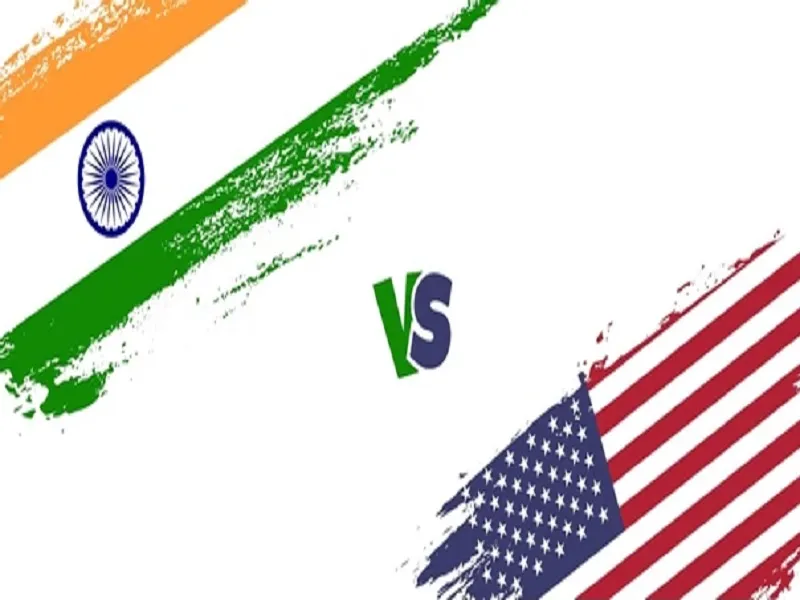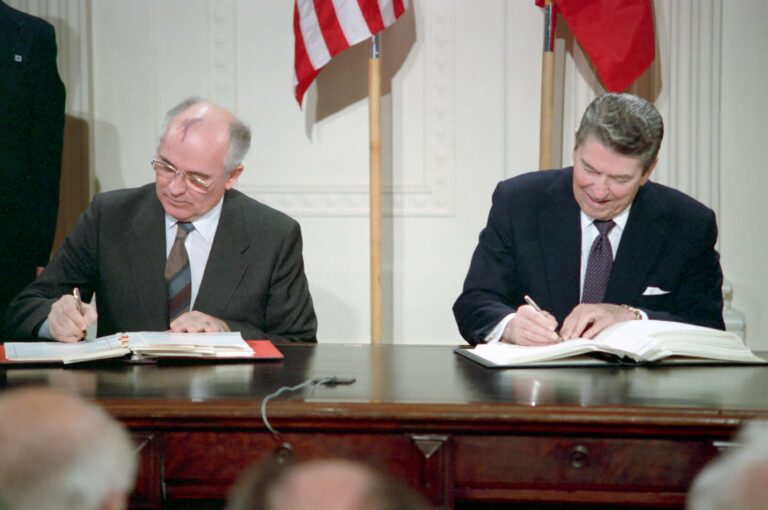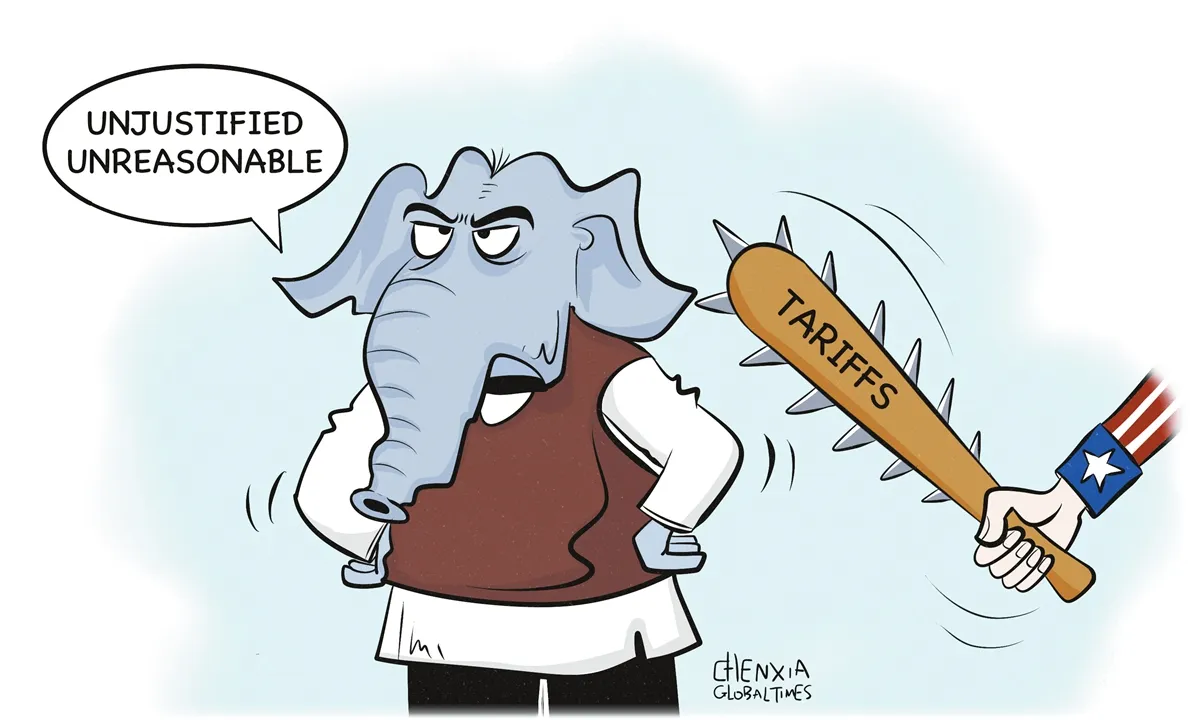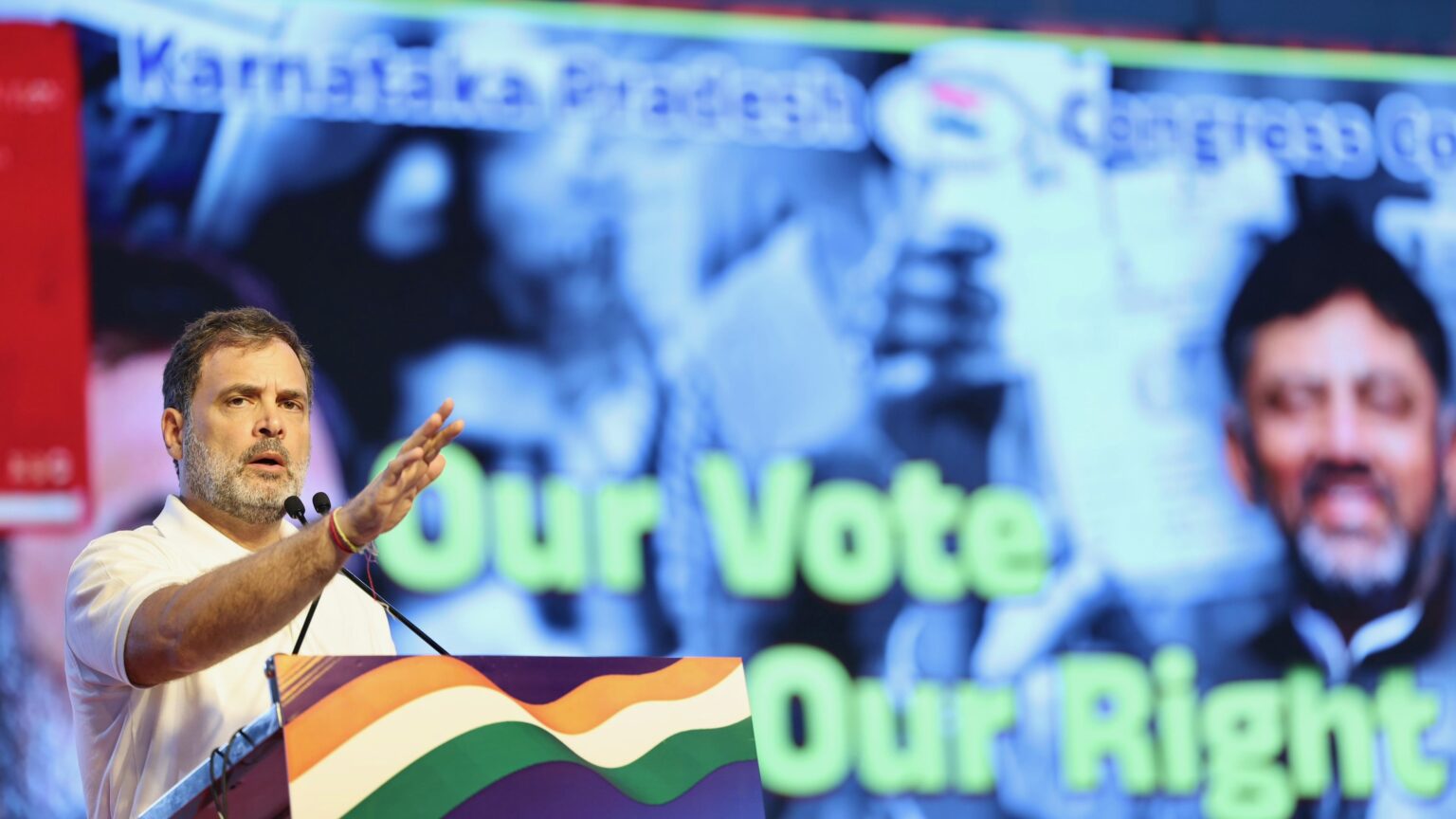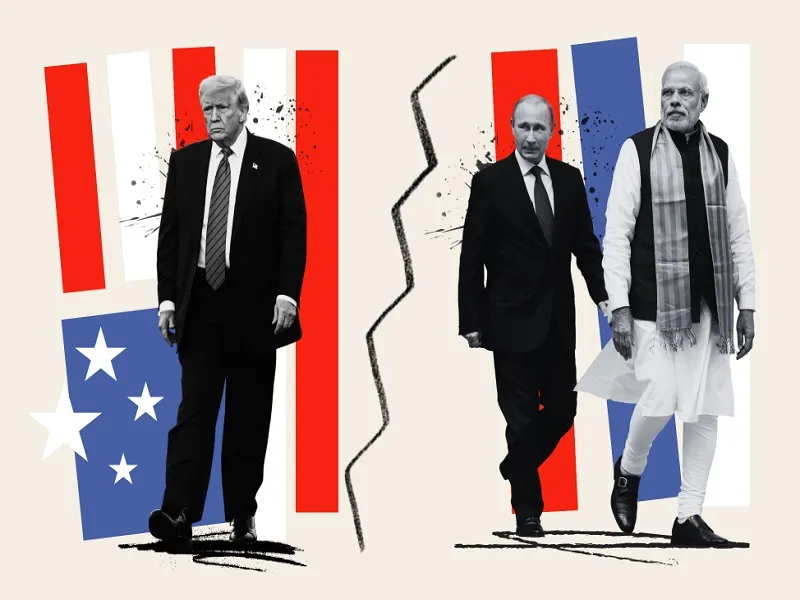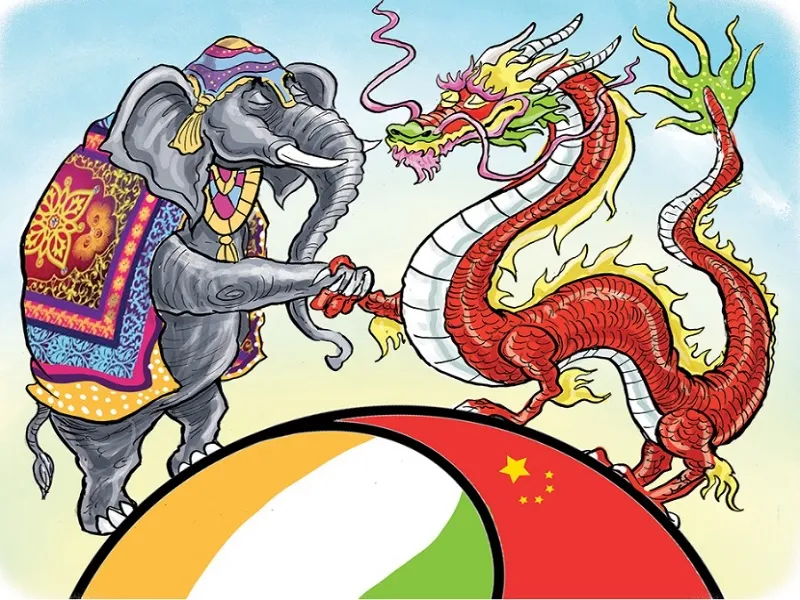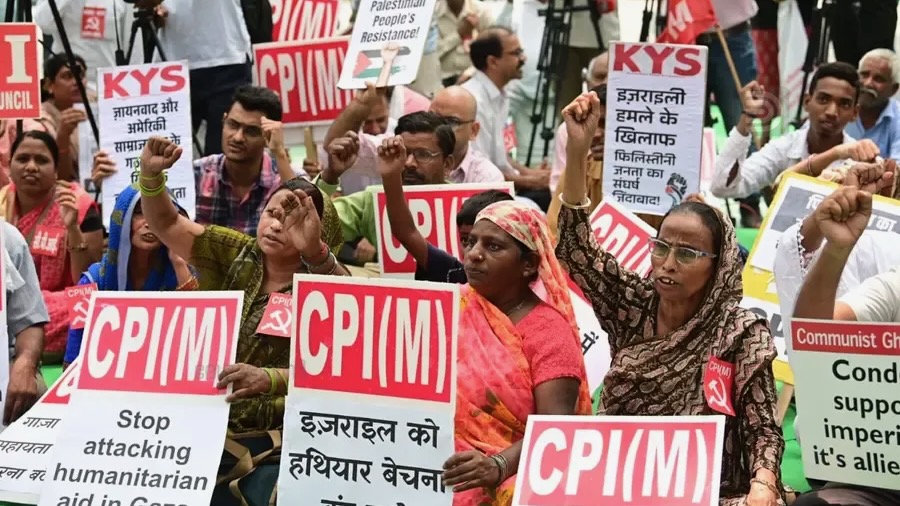August 8, 2025 by M. K. BHADRAKUMAR
India’s existential angst to confront Western imperialism
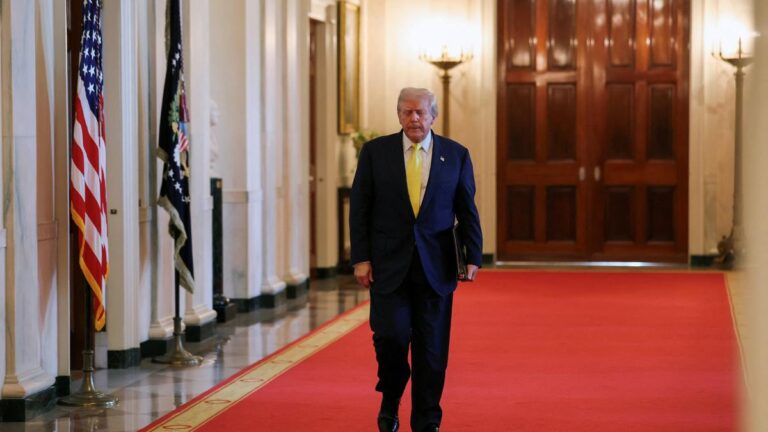
The U.S. President Donald Trump ruled out the possibility of trade negotiations with India until the issue of tariffs is resolved, White House, Washington, August 7, 2025
Reserve Bank of India Governor Sanjay Malhotra’s remark on Wednesday that the US tariff hike is unlikely to have any “major impact” on India’s economy, “subject to retaliatory tariffs coming into the picture, which we do not foresee” — and that even if India cuts back on Russian oil, the impact on domestic inflation may not be severe — can only be seen as a supplementary effort to allay public disquiet.
However, it brings to light the lack of clarity in India about President Donald Trump’s intentions.
Any assumption that this is a Trumpian temper-tantrum lacks credibility. What if in the hunting ground, Trump is far from a lone ranger ? What if he represents the Deep State and is only pursuing a concerted Western agenda dating back by decades?
In a somewhat similar situation during 2014-2022, when the Biden administration sought to corner Russia and force it into a bear trap, the entire collective West rallied behind the US leadership. Can anyone guarantee that the developing situation can be any different? These are early days.
To my mind, Trump is captaining the ship which is threatened by an immovable iceberg, and the entire NATO family is on board. Arguably, his compass has been pre-set even before was elected for a second term. Wasn’t the NATO Secretary-General Mark Rutte the first western leader to raise his voice in an exceptionally harsh cadence that Modi Govt was hobnobbing with Putin?
Make no mistake, Rutte didn’t mince words when he addressed PM Modi personally while talking to reporters in Washington on July 17 as he was walking to Capitol Hill soon after a closed-door meeting with Trump in Oval office.
Rutte said, “President Trump said that if Russia is not serious about peace talks within 50 days, he will slam secondary sanctions on countries like India, China and Brazil. So my encouragement to these three countries particularly is, if you live now in Beijing, or in Delhi, or you are the president of Brazil, you might want to take a look into this, because this might hit you very hard.”
Rutte added, “So please make the phone call to Vladimir Putin.”
He then went on to announce that the US will now supply Ukraine with weapons “not just air defence, also missiles, also ammunition, paid for by the Europeans.”
Did he leave anything to our imagination in his rude remark? Two Indian cabinet ministers responded alright, but in retrospect, Rutte was only articulating Trump’s talking points.
The stakes are so high that a Russian victory in Ukraine will most likely finish off NATO, expose the US as a toothless tiger and render the Europeans orphans living under the tutelage of Russia.
Can Trump accept such a humiliating presidential legacy? Conversely, will Putin allow NATO to snatch victory from the jaws of defeat or be party to scripting Trump’s triumphalist legacy of having defeated Russian aggression? Please do take note that the word “aggression” reappeared more than once in the White House website this week just the way Biden would have wanted.
Simply put, the western agenda to inflict a “strategic defeat” on Russia is still a work in progress and the containment and weakening of Russia is an absolute prerequisite of the situation for NATO. And, for Trump, without NATO underpinning, how would he fortify American hegemony on the world stage, which is under siege?
Indeed, conceptual clarity is crucial that the project that Trump has initiated to clip Modi’s wings is scripted by the US Deep State and NATO. Macron, Starmer, Merz, Meloni — none of them has stepped forward to speak a kind word for India. The sooner we understand this stark reality, the better prepared we will be in the coming period when the summer turns to autumn and to winter.
Lest it gets forgotten, Russia also took things easy until things became bloody serious and the West simply confiscated Russian reserves in the western banks.
Let us hope things may not come to such a pass. That said, in the western perception, Modi is susceptible to pressure (for whatever reasons) and is one of those Global South satraps who will compromise when the chips are down.
Part of the blame lies with our own sheepish behaviour. After all, didn’t India lose enthusiasm for BRICS? Trump understands that the spectre of a BRICS currency will not arise so long as India doggedly blocks it.
Again, why is G7 pampering Indian vanity? And it is working. A last-minute invite relayed on phone was all that was needed for PM to drop everything and rush to Kananaskis for the G7 summit.
This time around, the collective West, led by Trump, is determined to institutionalise India’s subaltern role in international politics. Trump is determined to smash to smithereens Indian pretensions of “strategic autonomy” and independent foreign policy.
There must be conceptual clarity while formulating an effective Indian response to the looming Western threat to the country’s sovereignty and Trump’s attempt to make India a horrible example in the eyes of the Global South.
The real problem for Modi will be the internal opposition to any radical rethink in India’s foreign policies and jettisoning of the pro-Western tilt with a view to give authenticity to its doctrine of strategic autonomy. The moral fibre of the Indian elite has become so weak that a life that doesn’t allow hanging out with the Western world is simply unthinkable for them. This was also Putin’s problem in some ways, but where Russia scores is that it has a deeply embedded collective consciousness of Western predators through the past millennium since the great schism in the Christian church.
When it comes to America, the Indian elite see it as a home away from home. Unsurprisingly, Modi chose agriculture, diary and fishery sectors (which are of course a massive vote-bank) to assert his government’s grit to stand up to pressure from US negotiators at the ongoing trade talks, but left out geopolitics altogether, which is what is motivating Trump.
The need of the hour at the leadership level is a Hobbesian advocacy of absolute sovereignty as the only kind of government for India that could resolve problems caused by the selfishness of human beings. Gandhiji would not have hesitated a moment in existential angst if confronted with Western imperialism.
https://www.indianpunchline.com/indias- ... perialism/
*****
Trump raises tariffs on India to 50%, Delhi calls move “unjustified and unreasonable”
Opposition groups, trade and farmers’ unions demanded the government of India explore alternative international mechanisms, such as the BRICS, to counter US imperialist moves
August 07, 2025 by Abdul Rahman
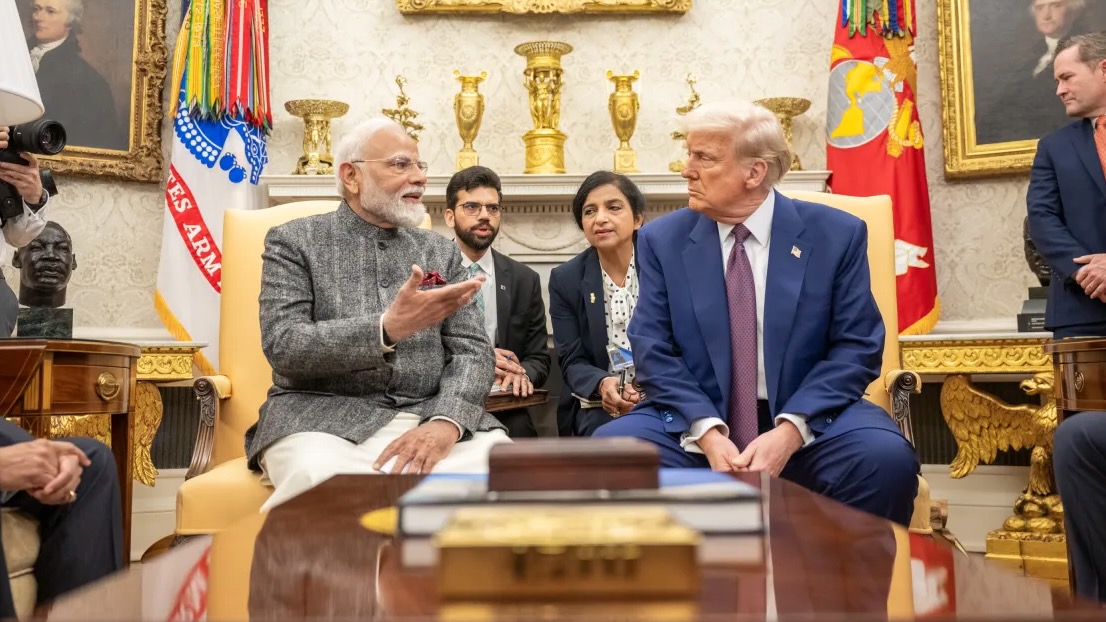
President Donald Trump hosts Prime Minister of India Narendra Modi on February 13, 2025. Photo: White House
India’s Ministry of External Affairs objected to US President Donald Trump’s announcement on Wednesday, August 6, raising the total tariffs on imports from the country to 50%. It called the move “unfair, unjustified and unreasonable” and vowed to take the necessary actions to protect India’s national interest.
“We have already made clear our position on these issues, including the fact that our imports are based on market factors and done with the overall objective of ensuring the energy security of 1.4 billion people of India,” India’s MEA said in response to Trump’s claims that the additional 25% tariffs announced on Wednesday were in fact a “penalty” for India importing oil and weapons from Russia.
Last week, Trump had announced a 25% tariff on Indian imports and warned of an additional “penalty” over India buying Russian oil and weapons, without specifying the rate until the Wednesday announcement.
The US administration had claimed that by buying its oil and weapons from Russia, India has emerged as a major supporter of the war in Ukraine.
India’s MEA tried to defuse the accusations by arguing that several other countries, including some in the EU also continue to trade with Russia. “It is extremely unfortunate that the US should choose to impose additional tariffs on India for actions that several other countries are also taking in their own national interest,” India said.
The 25% tariffs imposed last week are effective from August 1, while the additional tariffs announced on Wednesday will take effect August 28.
The 21-day period is seen as a window for a possible negotiated resolution.
With the announcements on Wednesday, India became, alongside Brazil, the country facing the highest tariff under Trump’s so-called reciprocal tariff regime announced in April this year.
Last year, India had a trade surplus of USD 46 billion with the US, the total volume of which was just above USD 190 billion. The US is India’s second largest trading partner after China.
Sticking points
Trump’s imposition of high tariffs against India is also attributed to the failure of both countries to reach a trade deal before the August 1 deadline. This is despite the fact that India was one of the first countries to start trade negotiations with the Trump administration in February during Prime Minister Narendra Modi’s visit to the country.
The US has accused India of using strong protectionist measures to prevent US companies from doing business in several crucial sectors in India, claiming that India imposes one of “the highest tariff rates in the world”.
Since the beginning of the talks, India has reduced tariffs on Bourbon Whisky and motorcycles imported from the US and proposed to reduce tariffs on other industrial products to zero, as per a report in Reuters.
Industrial products are the largest components of India’s imports from the US and accounted for almost 40% of its total value last year.
India has also agreed to buy more energy and defense products from the US.
However, as per reports, the US has insisted that India open its dairy and agriculture sectors and reduce the high tariffs on them. These are the key sticking points in the trade negotiations.
Given the strong domestic opposition in India against such moves, the Modi government finds it difficult to open the dairy and agriculture sectors to US companies. Farmers groups and left parties have already expressed their anger over India’s trade deal with the UK, claiming it surrenders the interests of millions of farmers and warned against any such deal with the EU and the US.
Modi, while speaking in an event in Delhi on Thursday, claimed that his government will “never compromise on the wellbeing of its farmers, dairy and fishermen.”
It is already clear that if the 50% tariff remains it will negatively affect several industrial sectors in India, particularly the clothes, gems and jewelry, and pharmaceuticals, which mostly thrive because of their cost effectiveness, experts have argued. This may compromise millions of jobs.
Reuters reported that several Indian industries have already expressed fear that their sectors may not be able to endure such high tariffs and have sought help from the state.
Imperialist move must be resisted
Several opposition groups, such as the Indian National Congress (INC), the left parties, such as Communist Party of India (Marxist), various trade union groups, including Centre for Indian Trade Unions (CITU), and farmer’s unions like the Samyukta Kisan Morcha (SKM), issued statements condemning Trump’s move. Most of them called it a “weaponization of tariffs for imperialist gains” and urged the Indian government to resist it by consolidating existing global alternatives, such as the BRICS.
“The US imposition of additional 25% of tariffs threatening India to discontinue the oil imports from Russia directly or indirectly, exposes the ugly face of imperialism and its hell-bent bid to undermine the sovereignty and solemn rights of India to have independent trade relations in accordance with its national interests,” CITU said in a press release on Thursday.
CITU criticized the Indian government’s failure to adequately respond to the US threats in a timely manner, urging it to work to consolidate the available alternative international mechanisms, such as the BRICS, to “counter the US and its imperialist designs”.
CPI (M) called for demonstrations across the country “against US bullying and in defense of our country’s economic sovereignty”.
“The US is abusing its economic and military might to impose an unjust and chaotic world order thus targeting India. India cannot surrender its sovereignty to please the US,” said SKM, demanding the government take the people of India into confidence to build a united resistance against the “imperialist tactics” of the US.
https://peoplesdispatch.org/2025/08/07/ ... easonable/
******
New Delhi between sanctions and sovereignty
Lucas Leiroz
August 8, 2025
In the face of the instrumentalization of fentanyl as a pretext for coercion, New Delhi strengthens ties with Moscow and reopens dialogue with Beijing
In a world where the international order is increasingly shaped by the struggle between a declining unipolarity and an emerging multipolarity, sanctions have become the main weapon of a superpower that can no longer dictate the course of global affairs by consensus. What was once an exception — economic punishment against states clearly involved in illegal activities or blatant violations of international norms — has become a systemic, arbitrary, and politically motivated practice. And India is now the latest target of this coercive apparatus that defines the foreign policy of the United States.
The repeated use of sanctions by Washington reveals, above all, the exhaustion of its diplomatic capacity. Instead of building bridges with strategic partners, the U.S. chooses to punish, isolate, and sabotage any country that dares to follow an autonomous path.
Sanctions policy as a mechanism of domination
U.S. unilateral sanctions — almost always imposed outside the UN Security Council and in defiance of international law — have become a systematic policy of intimidation. Iran, Cuba, Syria, North Korea, Venezuela, Russia, and China have been the most well-known targets. But the list keeps growing. And India, previously seen as a potential Western ally in the Indo-Pacific, is now beginning to feel the weight of this punitive system.
The logic is simple: the U.S. identifies an “unacceptable” behavior — such as India’s refusal to join the sanctions against Russia — and from there constructs a narrative to justify pressure measures. It could be the defense of “human rights,” the “fight against terrorism,” or, as is now being done with India, the “war on drugs.” The content of the narrative is secondary; what matters is the effect: to break the sovereignty of the targeted country and force it to align with Washington’s foreign policy.
India: the new frontier of coercion
In recent days, Donald Trump has announced sanction packages of up to 50% against India, citing the “need” to punish trade partners of the Russian Federation. These coercive measures came after months of open threats toward India — some directly referencing the Indo-Russian partnership, others hiding behind the mask of the “fight against fentanyl.”
Although the recently announced sanctions are explicitly directed at Indo-Russian energy trade, there’s no guarantee that the U.S. will abandon the fentanyl rhetoric altogether. The “drug control” excuse may easily be revived at any moment to impose further sanctions on New Delhi, especially considering that this was Washington’s initial justification before Trump finally admitted the real motive: punishing India for its ties with Russia.
It must be emphasized that what brought India into Washington’s sanction crosshairs was not any real connection to fentanyl trafficking, but rather its strategic resilience in the face of Western efforts to isolate Russia. Since 2022, India has maintained firm energy and military cooperation with Moscow, refusing to take part in the U.S. and EU-led anti-Russian crusade. This pragmatic position — based on Indian national interests rather than ideological dogma — deeply irritated the Washington establishment.
In response, the U.S. began floating the idea that chemical exports from India could be diverted for fentanyl production — a claim made without solid evidence, but politically convenient. In a classic move, they attempt to turn a country with no proven role in fentanyl trafficking into part of the “drug problem,” paving the way for tariffs and trade restrictions.
This is Washington’s new modus operandi: transform internal crises — in this case, the collapse of the U.S. healthcare system and the opioid epidemic — into diplomatic weapons to force other nations to serve its strategic interests.
Rapprochement with Russia and China: India’s geopolitical response
In the face of this escalation, India appears to have understood the game — and is beginning to react astutely. Not only has it maintained and expanded its agreements with Russia, but it has also signaled a renewed openness to dialogue with China, having Prime Minister Modi announced a visit to Beijing.
This is a geopolitically significant move. India and China have long had a tense relationship, especially concerning the Himalayan border. But in the face of a common enemy — the global regime of unilateral sanctions that threatens the sovereignty of both — realism is starting to prevail. India already plays an active role in forums such as BRICS, the Shanghai Cooperation Organization (SCO), and the G20, but now signals a willingness to deepen its coordination with both Beijing and Moscow.
This marks the emergence of a “new” strategic triangle in the Global South — not based on ideological affinity, but on a shared need to resist the economic coercion promoted by the West. India is not becoming an automatic ally of China, but rather a situational partner in building a multipolar order, where the right to chart one’s own path is no longer subject to Washington’s approval.
Fragmentation of the global system and alternatives to the dollar
This strategic reconfiguration is happening in parallel with the fragmentation of the global financial system. As more countries begin operating outside the SWIFT system, pursue bilateral trade agreements in local currencies, and strengthen alternative development banks, the power of unilateral sanctions is beginning to erode. India has already signed agreements with Russia, Iran, and the UAE to trade in rupees, bypassing the U.S. dollar. BRICS+, with the potential creation of a common currency, is moving in the same direction.
By abusing sanctions as a tool, Washington is accelerating this process. In its attempt to maintain control, it ends up stimulating the formation of new centers of economic and diplomatic power — exactly the opposite of its intended outcome.
The end of the American consensus
The attempt to punish India over a crisis that is, above all, the result of domestic failure in the U.S., is not only an act of hypocrisy but also a major strategic miscalculation. Instead of isolating India, the U.S. is driving it deeper into multilateral frameworks that challenge Western hegemony.
New Delhi has made it clear it will not be turned into a geopolitical vassal. India is a civilizational power with its own interests and will not hesitate to forge partnerships — even with historical rivals — if it means securing strategic autonomy.
Sanctions, once presented as instruments of international justice, have become the primary mechanism for imposing a failed global order — one that seeks to preserve historical privileges at the expense of national sovereignty. The economic attacks on India over its strategic ties with Russia are just one example of this broader reality.
But a new world is taking shape. A world where countries like India, Russia, and China are building bridges over ruins — converging not out of ideological alignment, but from the urgent need to resist the systemic coercion of a declining empire. National sovereignty, more and more, will be asserted not through submission, but through coordinated resistance to the language of sanctions.
India understands this. And by responding with dignity and pragmatism, it shows that the path to strategic independence necessarily involves rejecting the arbitrary use of sanctions as a weapon of economic warfare. The multipolar world is under construction — and there is no room in it for domination disguised as moralism.
https://strategic-culture.su/news/2025/ ... vereignty/